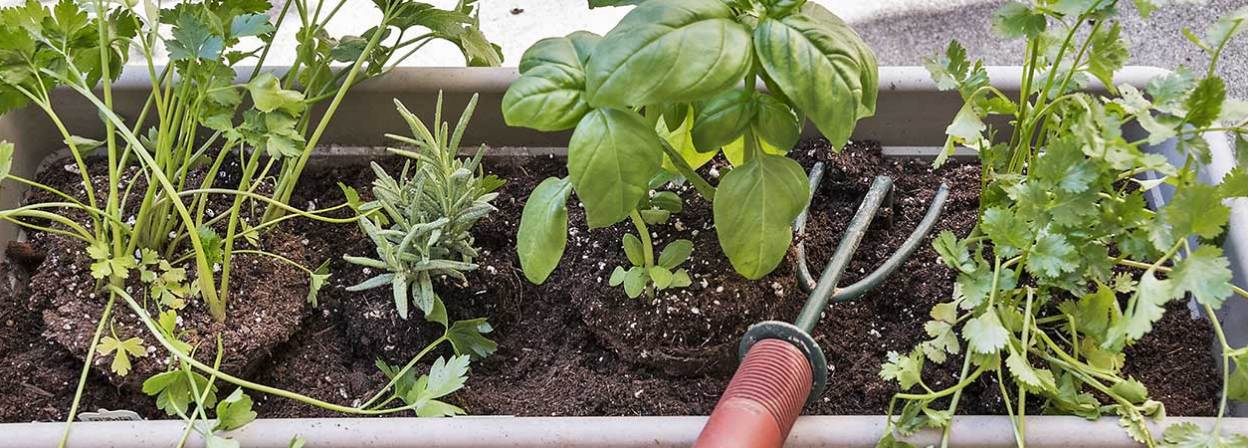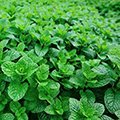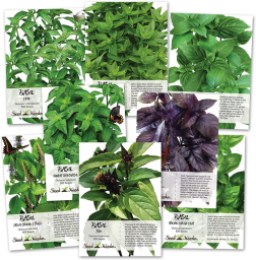Buying guide for best herb seeds
Have you ever wanted to make a recipe on the fly, but you gave up because you didn’t have the right fresh herbs on hand? The truth is, using fresh herbs can be expensive, especially if you’re passionate about home cooking. Growing your own herbs at home is a convenient way to keep costs down.
Starting your own herb garden is easy. All you need are seeds and some basic gardening supplies, including soil, planters, and fertilizer. You could keep it small by growing just a couple of frequently used herbs, or you could build a lush garden with a wide variety of herbs. Don’t worry if you’re not a green thumb; herbs are some of the easiest plants to grow, even for beginners. If you choose, you can invest in organic and non-GMO herb seeds, as well as those that are sustainable and ethically sourced.
Key considerations
How long it takes to grow herbs
It’s no secret that it takes time for plants to grow; herbs are no exception. Depending on the types of herbs you intend to grow, it’ll take between three weeks and three months for leaves to appear. So while growing herbs may not be an immediate solution to your cooking needs, it’s a great long-term investment for future meals.
Growing herbs indoors vs. outdoors
Growing herbs indoors and growing herbs outdoors are different experiences and processes. Each calls for its own set of supplies and equipment, but space, sunlight, and water must all be available.
Indoors: Growing herbs indoors is ideal for those who don’t have outdoor space. You can place your herb seeds in planters or use a hydroponic garden. Regardless of the method, you’ll need ample space for your indoor garden, so be prepared to give up a counter or window sill to the cause.
Outdoors: Growing herbs outdoors is ideal for those who have ample space. You could use planters or raised garden beds, or you could even build your own greenhouse. Keep in mind that outdoor herb gardens often attract critters, so you may need to cordon yours off to keep unwanted nibbling at bay.
Did you know?
Some critters aren’t fans of mint. As such, many gardeners recommend planting mint around herb garden edges as a natural perimeter.
STAFF
BestReviews
Types of product
Single herbs
Some people have a preferred herb they often use, such as basil, cilantro, or parsley. It makes sense to grow this at home, and getting single packets of seeds (as opposed to a variety pack) is probably the best way to go.
Herb variety packs
If you cook with several herbs, consider an herb variety pack. These contain between three and a dozen varieties. With that said, if you’re new to gardening, you’ll have some reading to do. Not all herbs require the same degree of hydration, temperature, or space.
Garden in a bag
“Garden in a bag” kits include all the essentials you need to plant your herb seeds. A kit may include planters, pots, grow mix pellets, fertilizer, labels, soil, or even a quick-start guide. Of all the ways to buy herb seed kits, this is definitely the most user-friendly. That said, some of these kits are limited to common herbs like basil, dill, or parsley.
Varieties of herb seeds
Non-GMO herb seeds
For herb seeds to be labeled non-GMO, they must meet stringent USDA standards pertaining to their cultivation. They must be grown without any influence or manipulation to their genetics. Non-GMO herb seeds can be a bit harder to find, and they tend to cost more than other herb seeds.
Organic herb seeds
In order for herbs seeds to be labeled organic, they must meet USDA criteria regarding growth and harvesting. Seeds must be grown in soil that has not had any prohibited substances used on it for a minimum of three years. Farmers must rely on natural substances and farming methods as opposed to synthetic ones.
Hybrid herb seeds
When plants of similar species are cross-pollinated, hybrid seeds can occur, producing a new herb variety. This typically occurs over the course of six to ten generations. You may have heard the term “heirloom” in reference to seeds; this describes older seed generations in a hybrid line.
Herb seed prices
Herb seeds vary in price based on the quantity you intend to buy. You could spend between $1 and $100 per envelope or package. The type of the herb seed kit, as well as its variety, also play a role in price.
Inexpensive: If you’re on a budget and only intend to grow a couple of herbs at a time, expect to spend anywhere from $1 to $15. These packets may contain just a dozen seeds or as many as 500 seeds.
Mid-range: If you’d like to invest in herb seed variety packs, expect to spend between $5 and $20. Organic and non-GMO herb seeds tend to cost more than others in this bracket.
Expensive: If you’d like to invest in a quick-start garden kit, be prepared to spend between $15 and $50. Note that some could cost as much as $100. Products that come with hydration equipment or ornate planters tend to cost more than others.
Accessories
Hydroponic garden: AeroGarden Black Harvest
You can grow a robust herb garden indoors with a hydroponic garden like this one from AeroGarden. It has space for up to six herbs at once, and it comes with gourmet herb starter pods.
Gardening tools: Scuddles Garden Tools Set
It’s easy to jump-start your garden project with the right tools. This deluxe set from Scuddles includes essential hand tools, gloves, and a convenient canvas storage tote.
Tips
Buy more than one variety of the same herb. For example, there are many types of basil with distinct flavors. Consider trying different varieties to find ones that suit your cooking best.
Learn gardening terminology. As with any hobby, if you learn the lingo of herb gardening, you’ll have more success as you grow your herbs. Keep in mind that some terms are used interchangeably but shouldn’t be, as they can mean vastly different things.
Defer to a gardening pro. If you need a little assistance getting your herb garden off the ground, ask someone for help. Fellow gardeners are more than happy to point you in the right direction.
FAQ
Q. How many seeds are contained in herb packets?
A. It varies considerably. An individual seed envelope can contain between five to ten seeds. If you choose a bulk option, expect to get far more seeds per envelope or packet. In fact, some packages contain 4,000 seeds or more. Most packets are labeled with the quantity as well as the expected yield.
Q. It doesn’t look like my herb seeds are sprouting in the timeframe they should. What am I doing wrong?
A. Many variables are at play when it comes to gardening. Perhaps your seeds haven’t received adequate sunlight or water. Perhaps your garden received too much water or light. Another possibility is that the weather conditions, including humidity or cold, haven’t been conducive to herb growth. Keep in mind that trial and error occurs when growing herbs, and it takes time to gain success.
Q. How can I find out more about the farm or laboratory from which I got my herb seeds?
A. Some companies enclose reports and information in seed packaging. Others display it on their website or provide it upon request. It’s recommended that you do secondary research about farms and laboratories to learn about their reputation and seed handling from a different perspective.






















